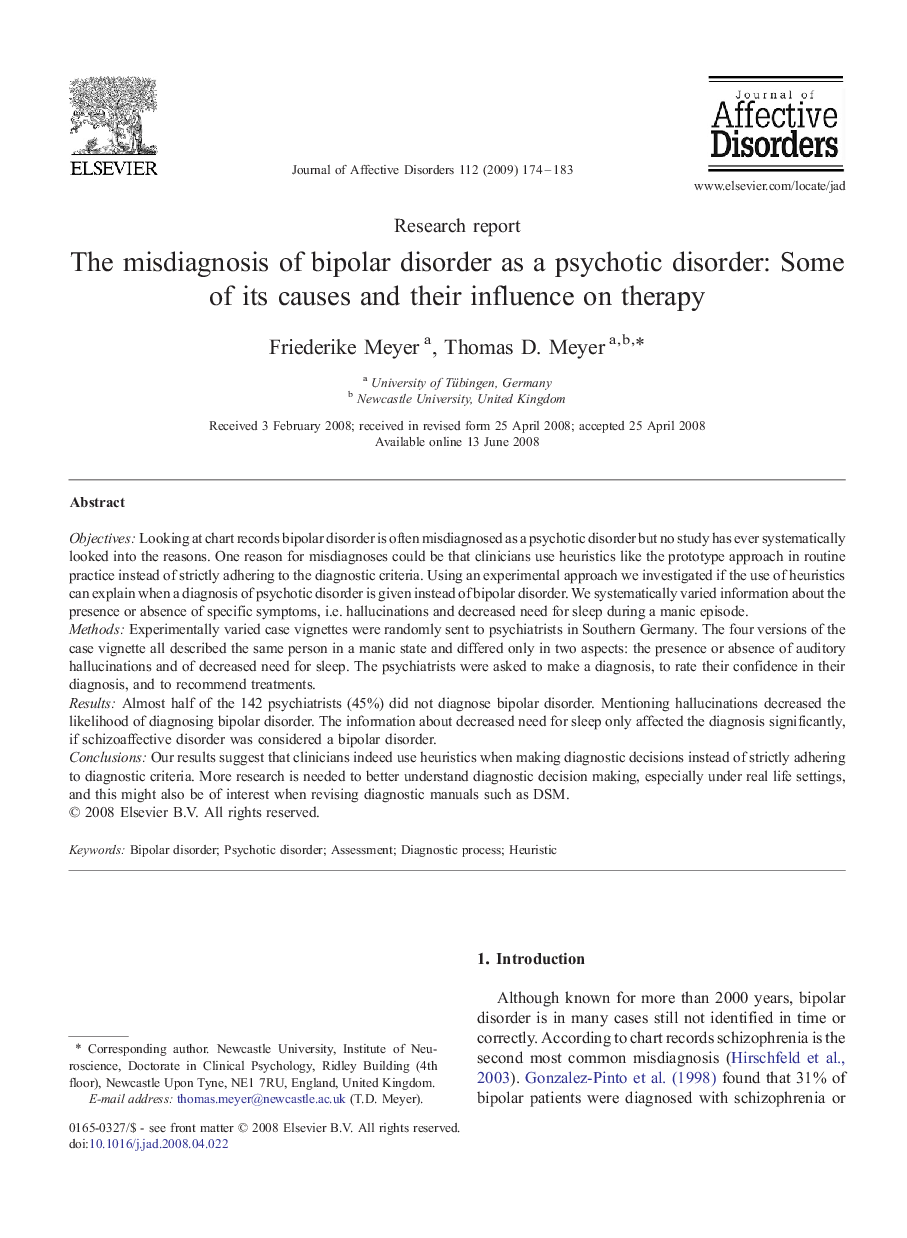| Article ID | Journal | Published Year | Pages | File Type |
|---|---|---|---|---|
| 6236656 | Journal of Affective Disorders | 2009 | 10 Pages |
ObjectivesLooking at chart records bipolar disorder is often misdiagnosed as a psychotic disorder but no study has ever systematically looked into the reasons. One reason for misdiagnoses could be that clinicians use heuristics like the prototype approach in routine practice instead of strictly adhering to the diagnostic criteria. Using an experimental approach we investigated if the use of heuristics can explain when a diagnosis of psychotic disorder is given instead of bipolar disorder. We systematically varied information about the presence or absence of specific symptoms, i.e. hallucinations and decreased need for sleep during a manic episode.MethodsExperimentally varied case vignettes were randomly sent to psychiatrists in Southern Germany. The four versions of the case vignette all described the same person in a manic state and differed only in two aspects: the presence or absence of auditory hallucinations and of decreased need for sleep. The psychiatrists were asked to make a diagnosis, to rate their confidence in their diagnosis, and to recommend treatments.ResultsAlmost half of the 142 psychiatrists (45%) did not diagnose bipolar disorder. Mentioning hallucinations decreased the likelihood of diagnosing bipolar disorder. The information about decreased need for sleep only affected the diagnosis significantly, if schizoaffective disorder was considered a bipolar disorder.ConclusionsOur results suggest that clinicians indeed use heuristics when making diagnostic decisions instead of strictly adhering to diagnostic criteria. More research is needed to better understand diagnostic decision making, especially under real life settings, and this might also be of interest when revising diagnostic manuals such as DSM.
